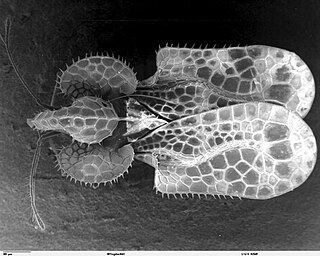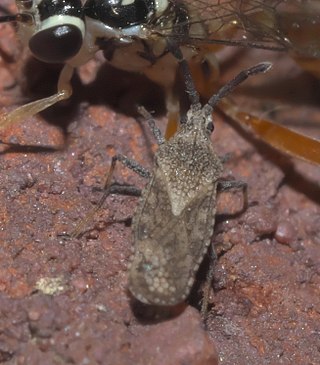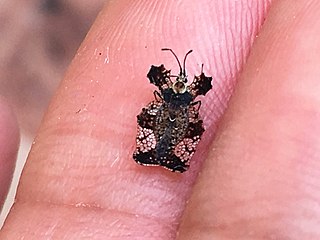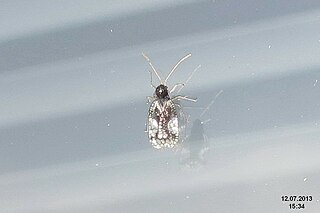
Ranatra is a genus of slender predatory insects of the family Nepidae, known as water scorpions or water stick-insects. There are around 100 Ranatra species found in freshwater habitats around the world, both in warm and temperate regions, with the highest diversity in South America and Asia. Fewer are found elsewhere, but include several African, some in North America, three from Australia and three from the Palearctic, notably the relatively well-known European R. linearis. Since Ranatra belongs to the family Nepidae which in turn belongs to the order Hemiptera, ranatrids are considered "true bugs".

Pentatominae is a subfamily of Pentatomidae, a family of shield bugs. This subfamily is the largest one within the Pentatomidae, having 4937 species classified in 938 genera. Species in this subfamily are phytophages and several of them are considered agricultural pests. Some invasive pentatomines such as Halyomorpha halys and Bagrada hilaris have been considered household pests. Higher systematics of the group have been revised by Rider et al.

The Cimicomorpha are an infraorder of insects in the order Hemiptera, the true bugs. The rostrum and other morphology of all members apparently is adapted to feeding on animals as their prey or hosts. Members include bed bugs, bat bugs, assassin bugs, and pirate bugs.

Dindymus is Old World genus of true bugs in the family Pyrrhocoridae. They are often confused with bugs in the family Lygaeidae, but can be distinguished by the lack of ocelli on the head.

Graptostethus is a genus in the insect family Lygaeidae. Although originally restricted to the Old World some species like G. servus have spread to parts of the New World.

Coranus is a genus of assassin bugs in the tribe Harpactorini.

Cydninae is a subfamily of burrowing bugs in the family Cydnidae. There are about 11 genera and at least 40 described species in Cydninae.

Tingini is a tribe of lace bugs in the family Tingidae. There are at least 250 genera and 2,400 described species in Tingini.

Podopinae, known as turtle bugs, are a subfamily of the insect family Pentatomidae. The type genus is Podops.

Teleonemia is a genus of lace bugs in the family Tingidae. There are at least 80 described species in Teleonemia.

Ammianus is a genus of lace bugs in the family Tingidae. There are at least 40 described species in Ammianus.
Belenus is a genus of lace bugs in the family Tingidae. There are about nine described species in Belenus.
Haedus is a genus of lace bugs in the family Tingidae. There are at least 30 described species in Haedus.
Ildefonsus is a genus of lace bugs in the family Tingidae. There are about six described species in Ildefonsus.

Dictyla is a genus of lace bugs in the family Tingidae. There are at least 80 described species in Dictyla.

Stephanitis is a genus of lace bugs in the family Tingidae. There are at least 90 described species in Stephanitis.

Gargaphia is a genus of lace bugs in the family Tingidae. There are more than 70 described species in Gargaphia.

Limnogonus is a genus of water striders in the family Gerridae. There are 28 described species in Limnogonus. Similar to other gerromorphan bugs, most species of Limnogonus have both macropterous specimens, which means that they are often able to fly. The wings are thought to be an adaptation to help the insects get away from drought allowing them to fly to the next available area that has water bodies when the rainy season arrives

Campylosteira is a genus of lace bugs in the tribe Tingini. Species are recorded from Asia, Africa, North America and Europe and includes C. verna found in the British Isles.
Oncochila is a genus of lace bugs in the tribe Tingini. Species are recorded from temperate Asia and Europe and includes O. simplex found in the British Isles.















